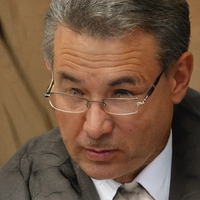
If you're considering venturing into the medical world, becoming a doctor in the USA can be incredibly rewarding, not just for the glow of the white coat but also for the robust paycheck. But what exactly can an MBBS doctor earn in the USA? Let's break down the numbers.
First things first, the salary of an MBBS doctor, or those who've completed a Bachelor of Medicine and Bachelor of Surgery degree, can differ significantly based on a bunch of factors. We're talking specialization, location, experience, and the type of institution a doctor is associated with. On average, though, the starting annual pay can be quite tempting, often surging past six figures.
Specialists, like cardiologists or neurosurgeons, tend to rake in more compared to general practitioners. And of course, practicing in bustling cities like New York or Los Angeles may offer higher earnings, but keep an eye on the cost of living—that bites a chunk out of the paycheck too!
For international students eyeing a career stateside, the process requires some extra steps. Passing the USMLE (United States Medical Licensing Examination) is a biggie. But hey, the rewards of navigating this path can be worth the hustle.
- Understanding MBBS in the USA
- Salary Expectations
- Factors Influencing Salary
- International Graduates
- Tips for Aspiring Doctors
Understanding MBBS in the USA
Alright, let's clear up a bit of confusion for those looking at MBBS in the USA. In America, the equivalent of an MBBS degree is the MD, or Doctor of Medicine. There's no separate MBBS classification like in many other countries. Most medical schools in the USA offer the MD program, which generally takes four years to complete.
Before you can even think about the MD, you need a solid foundation. Most students first complete a 4-year undergraduate degree, typically with a focus on the biological sciences. Think of it as the pre-med phase. After that, it's off to medical school for another four years. This might sound like a long timespan, but it's essential for learning and understanding the vast world of medicine fully.
Step-by-Step Journey
Here's a quick breakdown:
- Complete a bachelor's degree - usually 4 years
- Take the MCAT (Medical College Admission Test) - this is crucial for med school applicants
- Apply to medical schools - known for their competitive nature
- Complete an MD program - 4 more years of studying
- Pass the USMLE - required for practicing in the USA
- Complete a residency - lasting anywhere from 3 to 7 years depending on the specialty
Now, about that residency phase. It involves hands-on training in a particular branch of medicine and is where you'll really start to hone your clinical skills.
International Graduates
For international folks aiming to crack into the US medical scene, you might need to jump through some extra hoops. Clearing all the steps above, plus a few extra exams and certifications, is key. The ECFMG (Educational Commission for Foreign Medical Graduates) certification is a big one to focus on.
This all sounds like a ton of effort, but remember, practicing in the USA can lead to a fulfilling career with a juicy paycheck at the end. Just keep those goals in sight and stay resilient through the challenges!
Salary Expectations
So, you're curious about what an MBBS salary USA looks like once you've got that shiny degree. Well, let's get down to what matters: the potential earnings!
Average Salary
In the world of medical professionals in the USA, the salary isn't just a single figure—it varies quite a bit. On average, a general practitioner can start with an annual salary ranging from $150,000 to $200,000. Not bad for a beginner, right? Of course, these numbers can stretch higher as you gain experience and reputation.
Specialist Salaries
If you choose to specialize, hold onto your stethoscope because those salaries can really climb. Specialists like cardiologists or anesthesiologists often see numbers hitting the $300,000 to $400,000 range. Pediatricians, however, might start lower, but there's plenty of room for growth depending on skill and demand.
Location, Location, Location
Where you decide to hang your white coat makes a difference. Big cities like New York or San Francisco might offer higher paychecks, but remember, the cost of living can eat into that increase.
| City | Average Salary |
|---|---|
| New York | $220,000 |
| San Francisco | $230,000 |
| Chicago | $210,000 |
For those considering rural areas or smaller towns, you might not get the absolute highest salary, but there are perks like lower living expenses and sometimes hefty sign-on bonuses just to lure you in.
Additional Bonuses
Aside from the base salary, many doctors enjoy bonuses and benefits. Think retirement plans, health insurance, and even student loan repayments.
So, as you can see, becoming a doctor here not only makes a difference in people's lives—it can also bring in a pretty comfortable income. Whether you're a local or an international graduate aiming for the USA doctor salary, the possibilities are nothing short of promising.

Factors Influencing Salary
Diving into the world of MBBS salary USA, several elements shape the paycheck of a practicing doctor. Knowing these factors can help aspiring docs make savvy career decisions.
1. Specialization
Specialization is a massive player here. Doctors who specialize in high-demand fields like orthopedics, radiology, or cardiology often see bigger bucks compared to general practitioners. It’s about the supply-demand equation—a higher need for experts means higher paychecks.
2. Location
Where a doctor practices can make a big difference. Areas with a high cost of living or a shortage of medical professionals can offer substantially higher salaries to attract talent. For instance, a doctor in New York City or Los Angeles might earn more than one in a rural area, but remember to weigh those higher earnings against the cost of living.
3. Experience
Experience carries weight. Fresh graduates stepping into their first job may start on the lower end of the scale, but as they gain experience and establish their reputation, their earnings can climb. Seasoned practitioners with years under their belt often command higher compensation.
4. Type of Employer
Where you work matters too. Positions in private hospitals or specialty clinics typically offer better salaries than those in public sectors. And, if you manage to snag a position in a well-known hospital, the reputation of that institution can sometimes bump up your earnings.
5. International Graduates
For international docs eyeing the USA, salary can also hinge upon passing certifications like the USMLE. It adds a layer of challenge, but with it comes the potential to earn in line with local graduates once hurdles are crossed.
To sum it up, while the salary of a doctor in the USA is usually healthy, diving deeper reveals just how multifaceted earning potential can be. Keeping these factors in mind can help you strategize your path toward the most lucrative and fulfilling medical career possible.
International Graduates
Thinking about taking your medical career to the USA as an international graduate? You're in for an adventure. The path can be a bit winding, but armed with the right info, you can navigate it like a pro.
Understanding the USMLE
For starters, international graduates must pass the USMLE—it's the key to unlocking medical practice in the USA. This three-step exam assesses your ability to apply knowledge and skills, ensuring you're fit to practice medicine under American standards. It's challenging, but with good prep, totally doable.
Residency Requirements
Completing a residency in the USA is mandatory, even if you've been practicing back home. It varies in duration depending on your specialty, plus some institutions might have additional requirements. Researching programs in advance and applying widely increases your chances.
Navigating the Visa Process
The legal side can be a bit daunting. Mainly, you'll need a visa for your residency and future employment. The J-1 visa is common for medical residents, but the H-1B or O-1 might suit if you're further along. Consulting with a legal expert here is wise.
Finding Support and Resources
You don't have to go at it alone. Numerous support networks, both official and community-based, exist for international MBBS doctors aiming for a US career. From online forums to mentoring programs, tap into these resources for advice and encouragement.
While the journey might look long, the payoff is worth it. With persistence and planning, international graduates can wear that US-based white coat and enjoy the opportunities it brings.

Tips for Aspiring Doctors
So you're dreaming about the stethoscope and that MD after your name? Awesome choice, but it's a path that demands commitment and strategy. Here are some solid tips to guide you on your journey to becoming an MBBS doctor in the USA.
Nail the Basics First
Before anything else, get your academics in order. Strong foundational knowledge in sciences during your school years is crucial. Focus on biology, chemistry, and physics, as they form the backbone of medical studies.
Understand the Pathway
In the U.S., the medical path typically includes a pre-med undergraduate program followed by medical school. For international grads, understanding the American medical education system is vital. You'll need to pass the MCAT and get into a med school accredited by LCME.
Crack the Tests
Preparing for the USMLE is non-negotiable. It's a beast, so start early. Use practice tests and prep courses extensively.
- Step 1: Focuses on basic sciences.
- Step 2: Covers clinical knowledge and skills.
- Step 3: Tests your ability to apply medical knowledge practically.
Choose Your Specialization Carefully
While doctor income in the USA can vary, a good strategy is to pick a field you're passionate about—and that pays well, if salary is a priority. Research what specialties are in demand. Hint: Primary care, psychiatry, and preventive medicine are perennially needed.
Networking and Mentoring
Build a network early by joining clubs, attending seminars, and engaging with online communities. Find a mentor—it's invaluable. A seasoned doctor can provide insights you wouldn't find in a textbook.
Be Prepared for Residency
Residency is demanding with long hours but is a critical step. Be strategic about where you apply—it affects your future practice opportunities after a grueling residency period.
For those curious about financial prospects, here's a peek at average medical earnings in the USA by specialty:
| Specialty | Average Salary (USD) |
|---|---|
| General Surgery | $400,000 |
| Internal Medicine | $230,000 |
| Family Medicine | $220,000 |
Embarking on this journey is an adventure worth the effort. Keep these tips in your back pocket as you move towards the white coat and you'll be better prepared to succeed and thrive.
More Articles

Best Websites for Competitive Exams: Comparing Online Platforms for Success
What online platform actually helps you crack competitive exams? This guide compares sites, tools, and study methods that really work for motivated test-takers.

Do Employers Dislike Online Degrees? 2025 Hiring Reality and How to List Yours
Do employers dislike online degrees? Get the 2025 hiring reality: what matters, how to vet programs, resume tips, and field-specific advice-without guesswork.

Where to Start in Local Government: Your Step-by-Step Guide
Thinking about a job in local government but not sure how to start? This article lays out the types of entry-level roles, digging into the skills you’ll need, the right way to apply, and what to expect once you get a foot in the door. Get real tips on boosting your chances and making your application stand out. If you want a job that impacts your community and has real stability, here’s where to begin. Let’s break it down step by step.
